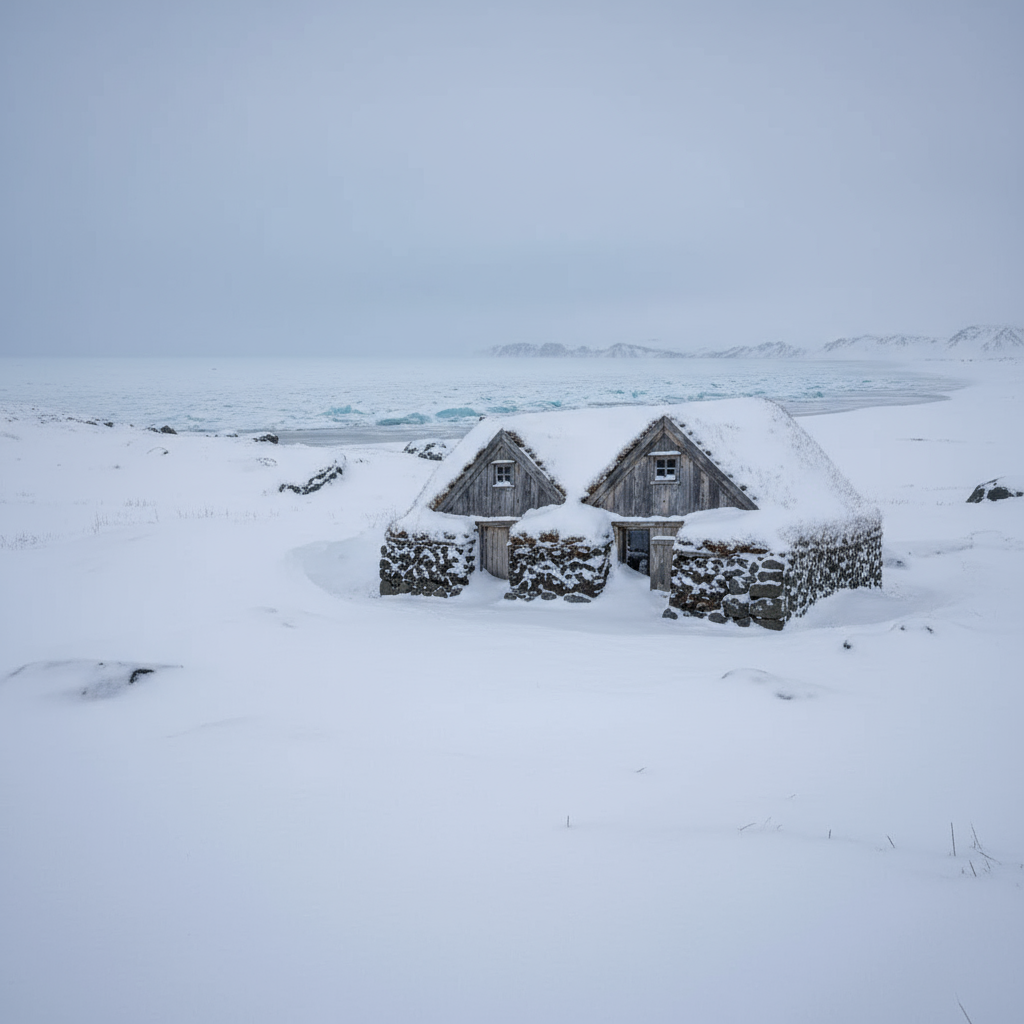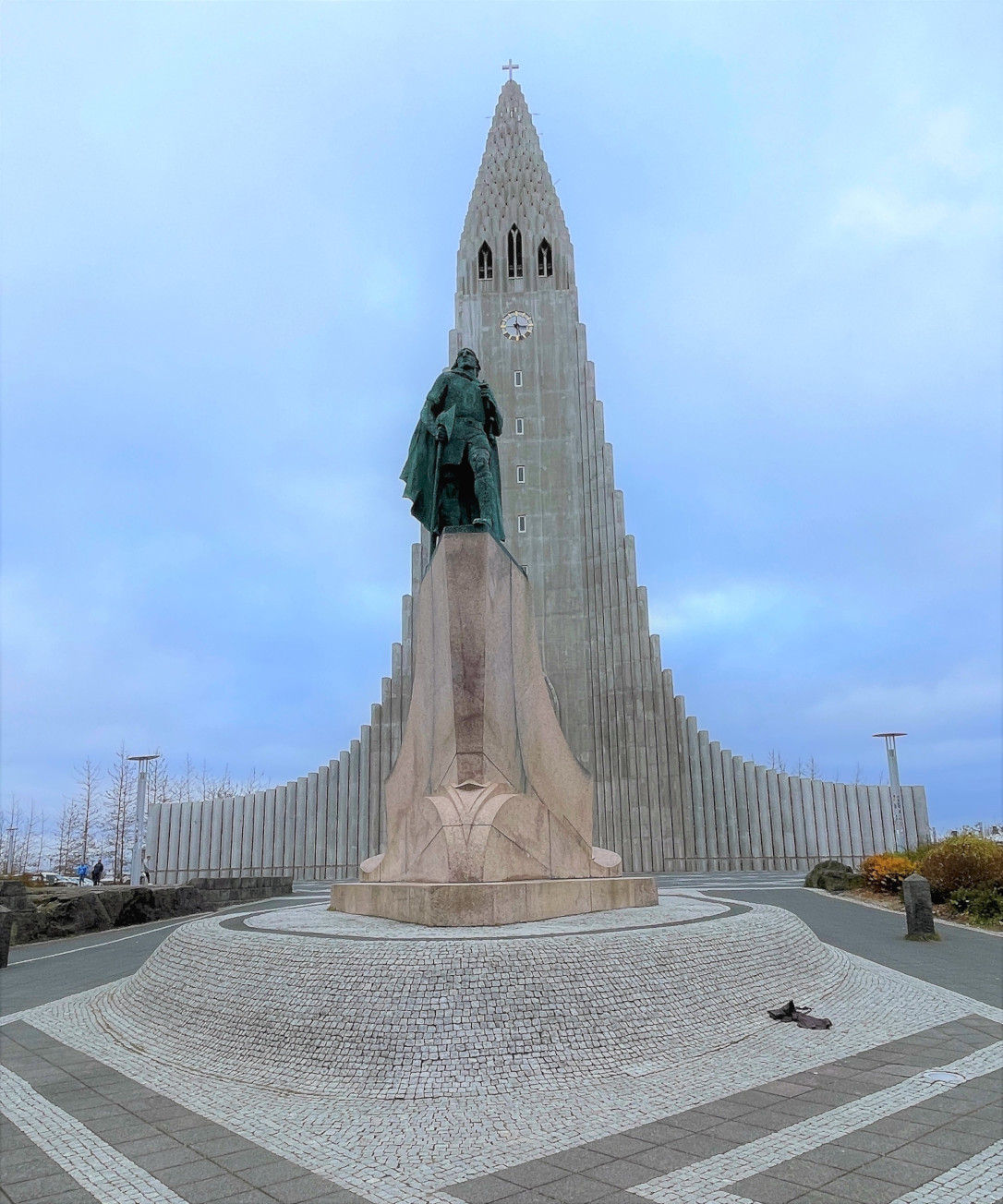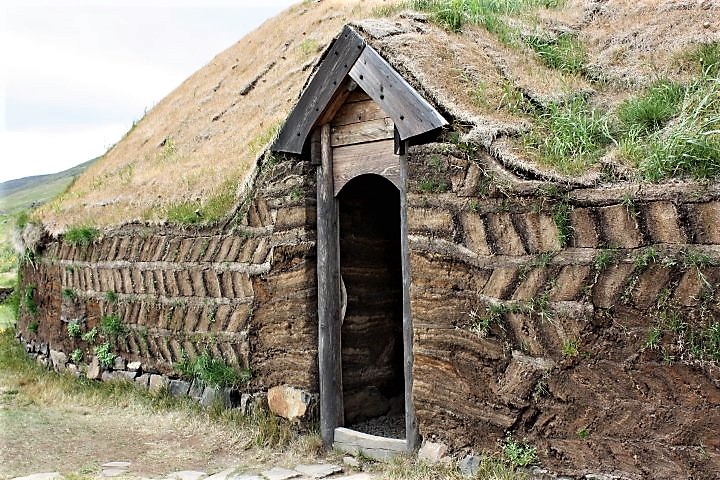
Skólavörðuholt Today
Today Skólavörðuholt is one of Reykjavík’s most photographed spots. Tourists ride the elevator to the top of Hallgrímskirkja, pausing to admire the city’s picturesque view.
But these modern landmarks, both the church and statue, are relatively new. Only in recent decades have they become part of the Reykjavík’s everyday skyline. Beneath this familiar scenery, however, the hill has witnessed stories far darker than any visitor’s snapshot.
A Notorious Burial
A far more infamous burial took place here. Steinunn Sveinsdóttir (1767–1805), one of Iceland’s most notorious women, was interred in a cairn on Leifsgata 10 located behind Hallgrímskirkja. Her story of passion, betrayal, and murder ensured her body had no proper grave, and her restless spirit would linger over Reykjavík.

Life at Sjöundá

In 1801, Steinunn [4][5] and her husband, Jón Þorgrímsson, moved with their three children into a duplex called Sjöundá in the Westfjords. On the other side lived Bjarni Bjarnason (1761-1805), his wife Guðrún Egilsdóttir, and their five children. It did not take long for an affair between Steinunn and Bjarni to begin.
Secrets in the Snow

The winter of 1801–1802 was particularly harsh. Iceland saw only about four hours of daylight per day, and the sea ice cut off all contact with the outside world. Food became so scarce that residents were forced to kill their animals to survive. Locals later called it the “Ice Cube Winter.”
Disappearance and Suspicion
Then, on April 1, 1802, tragedy struck: Jón vanished without a trace. Many assumed he had fallen from the cliffs at Skorarhlíðum, a plausible explanation given the harsh weather and poor visibility. But when Guðrún suddenly died on June 5, suspicions of foul play began to grow, particularly because the affair was widely known.
Evidence Emerges
When Guðrún’s coffin arrived at the church, the priest examined her body but found no signs of violence. However, on September 25, Jón’s body washed ashore at Rauðisandur. It showed clear signs of human-inflicted wounds and none of the fractures expected from a cliff fall.
Confessions and Crimes
Both Bjarni and Steinunn were interrogated and eventually confessed. At the time of her arrest, Steinunn was pregnant with Bjarni’s child. Bjarni admitted to striking Jón over the head with a cane, rendering him unconscious. He then dragged the body toward the ocean. The following day, when Jón’s body washed ashore, Bjarni buried it in the snow nearby. Early the next June, he moved the body to the cliff and pushed it out into the ocean.

The Murder of Guðrún
The killing of Bjarni’s wife, Guðrún, was even more callous. On April 29, 1802, Bjarni gave Steinunn rat poison to mix into Guðrún’s porridge. She became violently ill, vomiting and wracked with immense pain. Although the poisoning left her near death, it did not stop Bjarni and Steinunn. On June 5, 1802, Bjarni choked Guðrún to death while Steinunn held her hands down to prevent her from resisting.

Sentence and Execution Plan
After admitting their crimes, both were charged with murder and sentenced to death and torture. Bjarni was to be pinched with glowing-hot pinchers five times (later reduced to three), both at the sites of the murders and at the place execution location. He was to be led with his bareheaded, a noose around his neck and his hands bound. His right hand would be cut off, followed by his head, both displayed on stakes at the execution site.
Steinunn was sentenced to be beheaded, with her head similarly placed on a stake at the site of execution.
Trial and Imprisonment
In the summer of 1803, while still in custody, Steinunn gave birth to Bjarni’s child. Around the same time, Bjarni attempted to escape but was recaptured. Both were later moved to Reykjavík and held in the jail at Arnarhóll, awaiting word from the Danish king.


Image generated using AI, depicting the Prime Minister’s House in Reykjavík as it appeared between 1765 and 1770 when it was Iceland’s first prison, created with assistance from Perplexity AI.
Royal Approval Without Torture
In November 1803, the king approved the executions but decided against the torture originally planned.
Execution Delayed
The Icelandic authorities faced a major problem: there was no executioner in Iceland at the time. This stalled the execution while officials tried to figure out a solution. During his extended imprisonment, Bjarni’s feet were chained, causing severe injuries and constant pain. Although he was sentenced to die, the guards took pity on him eventually removed his chains to ease his suffering.
Escape and Transport Plans
Bjarni, knowing his fate, seized the chance to escape but was recaptured two or three weeks later. Meanwhile, the authorities sought help from Denmark, requesting an executioner. Instead of sending one to Iceland, it was decided that both Steinunn and Bjarni would be transported to Norway for execution.
Steinunn’s Death
While awaiting transport, Steinunn died at Arnarhóll on August 31, 1805. The exact cause of her death remains unclear, though some theories suggest severe abuse by the guards. Her body was placed in a wooden box and carried to Skólavörðuholt, where a shallow grave was prepared near Leifsgata 10.
Burial on Skólavörðuholt

Steinunn’s body was buried in a shallow grave on Skólavörðuholt, covered with rocks and dirt to form a cairn called Steinkudys. A stake was placed atop the cairn — meant to display her head after the planned execution. She was denied consecrated ground because of her crimes.
It was once a tradition to throw rocks on cairns, though not everyone did so for the same reason. Rocks were tossed for purposes ranging from maintenance to desecration – or to stop the haunting of the person buried below.
Bjarni was not allowed to attend her burial. Twelve days later, he was sent aboard the De tvende Söstre to Kristiansand, Norway, where he faced execution. On October 4th, 1805, his hand was cut off before his beheading. His body was put on a rack fitted with rollers on each end[9], and his head and hand were displayed on stakes at the execution site.
Rediscovery of the Coffin
During construction work on Skólavörðuholt in the winter of 1914–1915, workers uncovered Steinunn’s coffin. After examination of her remains, she was moved to Hólavallagarður Cemetery, placed in a new coffin, and reburied in the southwest corner of the grounds.

A Memorial for the Past
An article by Kristinn Egilsson, published in 2012[10], explained his fascination with this 200-year-old murder. He was struck by how Steinunn’s grave at the cemetery was never marked and decided to do something about it. Kristinn visited Sjöundá, the site of the murders, and took a stone from the home. He then traveled to Rauðisandur, where Jón’s (Steinunn’s husband) body had washed ashore, to collect sand. Using the stone and sand, he created a plaque for Steinunn’s grave.
Kristinn’s interest is also personal: his great-great-grandfather was the oldest child of Bjarni and Guðrún. Through the Icelandic biotech company deCODE, which maps human genes and common diseases, he verified the family’s genetic lineage. In a 2016 article, he noted that Steinunn has more than 2,000 descendants and Bjarni around 1,800[11].
Kristinn and some other descendants have questioned the accuracy of the accusations against Steinunn and Bjarni. He believes Bjarni may have killed Jón in self-defense and found no evidence that Steinunn admitted to holding Guðrún down during her murder.

Restless Spirit
Since her death, many have claimed to experience Steinunn’s haunting presence throughout Reykjavík. Her tale of passion, betrayal, and murder continues to linger over the city, a reminder of the dark history buried beneath Skólavörðuholt’s modern landmarks.
Today, visitors to Hallgrímskirkja stroll past the hill where Steinunn was once buried, unaware that Reykjavík’s most photographed spot was once home to one of its darkest tales.
References
[5] Only about 30 years earlier this very home housed another family tragedy. A woman was convicted for having a child with her foster father and sent to prison in Reykjavík, the same prison Steinunn and Bjarni would later find themselves in.
[6] https://www.funiceland.is/nature/beaches/raudisandur/
[7] https://sogurogsagnir.is/sagnabrunnur/sjounda/
[8] Give or take depending on the month.
[9] A torture device that stretches the body.
[10] https://www.mbl.is/frettir/innlent/2012/08/27/steinunn_a_sjounda_faer_legstein/
[11] https://www.mbl.is/frettir/innlent/2012/08/27/steinunn_a_sjounda_faer_legstein




